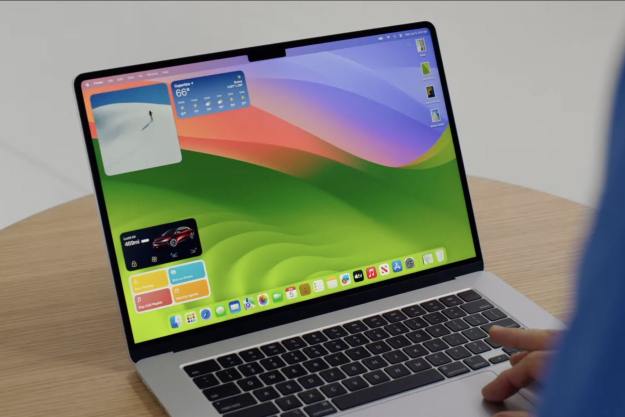
MacOS Mojave users will soon be able to join Group FaceTime chats, a feature that allows up to 32 people to simultaneously participate in a video call. Apple had tested Group FaceTime chats before through early MacOS developer betas, but it ultimately removed the feature prior to launching MacOS 10.14. Now, like with the developer and public betas for iOS 12.1, Apple is reintroducing the feature for testing in its fifth beta of MacOS Mojave 12.14.1, which was released to developers this week.
If the testing is successful, Group FaceTime will likely launch to consumers as part of Apple’s MacOS Mojave 10.14.1 release. This will allow families, businesses, and organizations that have standardized on an iOS and MacOS workflow to hold group video chats over FaceTime. Previously, FaceTime was limited to a one-to-one connection. Though multiple people can be huddled around a single iPhone or Mac to hold a video call, FaceTime does not allow multiple people in separate locations to join the same call. Group FaceTime changes that, and unlike platforms like Microsoft’s Skype or Google’s Hangouts, additional software isn’t required, as FaceTime is a preinstalled experience on Apple’s phones, tablets, and computers.
In addition to restarting its testing of Group FaceTime, the fifth beta of MacOS Mojave 10.14.1 also introduced 70 new emoji, according to a report on AppleInsider. The new emoji match the additions that Apple also introduced in its recent iOS 12.1 beta release. This way, MacOS and iPhone users will be able to see the same emoji when they message each other through iMessage.
It’s unclear when Apple will launch MacOS 10.14.1. But given that Apple has a press event scheduled for October 30 that is widely believed to see the introduction of refreshed iPad and MacBook products, the company could use the venue to showcase some of the new features that will be part of MacOS 10.14.1. Apple announced MacOS Mojave earlier this summer, but the latest operating system was only released to consumers this fall. Mojave introduced a number of notable changes to the Mac computing experience, including a new dark mode, new apps that are ported from iOS to MacOS, and a new workflow for marking up and editing screenshots. If you haven’t installed MacOS Mojave, be sure to read our review for more details.
Editors' Recommendations
- Don’t download the latest macOS Ventura update just yet
- The 6 best ways Macs work with your other Apple devices
- All the best macOS Sonoma tips and tricks you need to know
- Apple fixed one of my biggest macOS gripes with Sonoma — but I still want more
- macOS Sonoma public beta review: more than just screensavers


